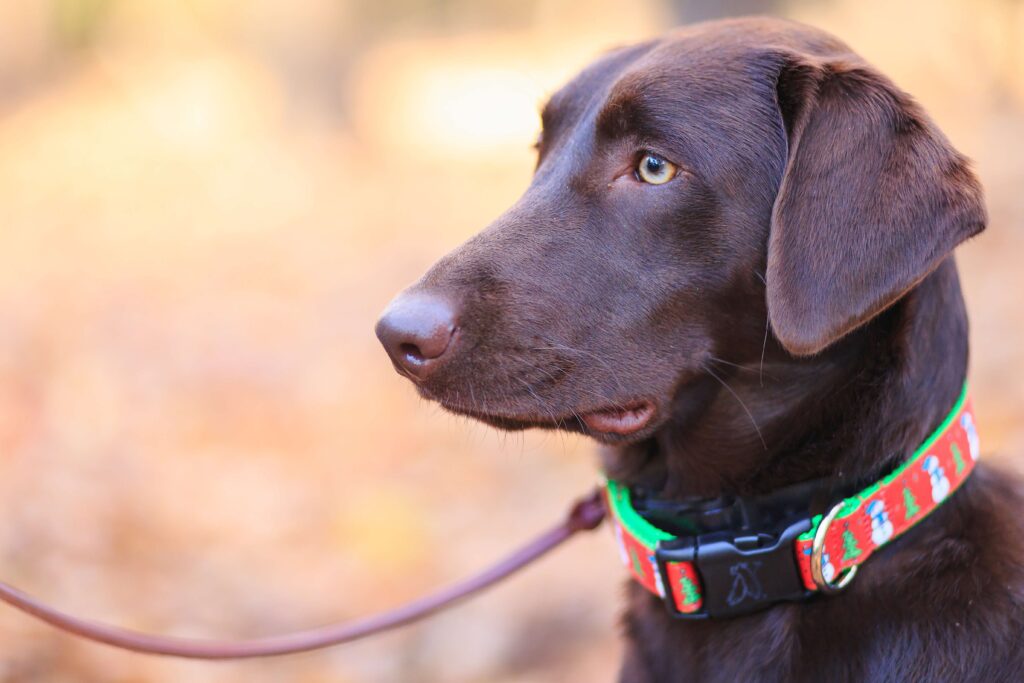Best dog training collars| Guide Must Read before buy!
A dog training collar is a device that is worn around a dog’s neck and is used as a tool for training and behavior modification. There are many different types of training collars available, each with its own unique features and intended uses.
Training collars can be an important tool for dog training because they provide a way for the trainer or owner to communicate with the dog and give cues or corrections in a consistent and controlled manner. They can be particularly useful for teaching obedience commands, such as “sit,” “stay,” and “come,” as well as for addressing problem behaviors like pulling on the leash or jumping up on people.
Some common types of training collars include flat buckle collars, slip collars, martingale collars, choke chains, electronic training collars, vibrating collars, and remote control training collars. It’s important to choose the best training collar for your dog based on their size, breed, temperament, and specific training needs.
Types of dog training collars
Flat buckle collars
Flat buckle collars are the most common type of training collar and are often used for everyday wear. They have a flat strap with a buckle closure and are usually made of nylon or leather. Flat buckle collars are generally considered safe and are suitable for most dogs, although they may not be suitable for dogs with very thick necks or for use in certain training situations.
Slip collars
Slip collars, also known as choke chains or choke collars, are made of a length of chain with rings at each end. They are designed to tighten around a dog’s neck when the leash is pulled, but are supposed to loosen when the tension is released. Slip collars can be an effective training tool, but they should be used with caution and only under the supervision of a professional trainer or behaviorist.
Martingale collars
Martingale collars are similar to slip collars, but they have a limited range of tightening and are designed to prevent a dog from backing out of the collar. They are often recommended for dogs with narrow heads, such as Greyhounds, who can easily slip out of a regular collar.
Choke chains are a type of slip collar that is made of a continuous loop of chain with a ring at each end. They are designed to be slipped over a dog’s head and tightened around the neck when the leash is pulled. Choke chains are controversial and are not recommended by many trainers and behaviorists due to the potential for injury and the risk of punishment-based training techniques.
Electronic training collars
Electronic training collars, also known as “shock collars,” use electric shocks to give a correction to a dog’s behavior. These collars can be controversial and are not recommended by many trainers and behaviorists due to the potential for negative effects on the dog’s welfare.
Vibrating collars
Vibrating collars use vibrations to give a correction to a dog’s behavior. These collars can be an effective training tool, but they should be used with caution and only under the supervision of a professional trainer or behaviorist.
Remote control training collars
Remote control training collars are collars that are controlled by a handheld remote and can deliver a variety of stimuli, such as a beep, vibration, or shock, to the dog. These collars can be an effective training tool, but they should be used with caution and only under the supervision of a professional trainer or behaviorist.
Considerations for choosing a dog training collar
When choosing a dog training collar, it’s important to consider the age and size of the dog. Training collars come in different sizes and are designed to fit different breeds and sizes of dogs, so it’s important to choose a collar that fits your dog properly.
It’s also important to consider the dog’s breed and temperament when choosing a training collar. Some dogs may be more sensitive to certain types of stimuli, such as vibration or shock, and may require a more gentle approach to training. It’s a good idea to consult with a professional trainer or behaviorist if you are unsure which collar is best for your dog.
The specific training goals or issues being addressed will also influence the type of training collar that is best for your dog. For example, if you are working on basic obedience commands, a flat buckle collar may be sufficient. However, if you are trying to address specific behavior issues, such as leash pulling or jumping, a different type of collar may be more effective.
It’s also important to consider the dog’s history of responding to training techniques when choosing a training collar. If your dog has had negative experiences with certain types of collars in the past, it may be best to avoid those types of collars and try a different approach.
Finally, it’s important to consider the dog’s physical condition when choosing a training collar. If your dog has any health issues that may be affected by the collar, such as neck or throat problems, it’s important to consult with a veterinarian before using a training collar.
Best practices for using dog training collars
It’s important to follow best practices when using a dog training collar to ensure that the collar is used effectively and safely.
One key best practice is to ensure that the collar is properly fitted to your dog. A collar that is too loose may not be effective, while a collar that is too tight can cause discomfort or even injury to your dog. It’s important to follow the manufacturer’s instructions for fitting the collar and to check the fit regularly to make sure that it is still correct.

Another best practice is to use positive reinforcement techniques in conjunction with the collar. This means rewarding your dog for good behavior with treats, praise, or other positive reinforcement, rather than relying solely on punishment or correction. This can help to create a positive training experience for your dog and can increase their motivation to learn.
It’s also important to avoid punishment-based training methods when using a dog training collar. Punishment-based methods, such as using a shock collar to correct unwanted behavior, can be harmful to a dog’s welfare and can damage the relationship between the dog and their owner. Instead, it’s better to focus on positive reinforcement and to use correction only as a last resort.
If you are having difficulty training your dog or if you are unsure which collar is best for your dog, it’s a good idea to consult with a professional trainer or behaviorist. They can provide guidance and support to help you effectively train your dog and address any behavior issues.
Conclusion
In conclusion, there are many different types of dog training collars available, each with its own unique features and intended uses. Some common types of training collars include flat buckle collars, slip collars, martingale collars, choke chains, electronic training collars, vibrating collars, and remote control training collars.
It’s important to choose the right training collar for your dog based on their age, size, breed, temperament, and specific training needs, and to use the collar responsibly and with the guidance of a professional trainer or behaviorist if needed.
When using a training collar, it’s important to follow best practices, including properly fitting the collar to your dog, using positive reinforcement techniques, avoiding punishment-based training methods, and consulting with a professional if needed.
By following these guidelines, you can effectively train your dog and strengthen the bond between you and your furry friend.
FAQ
Subscribe to our weekly newsletter below and never miss the latest article.








